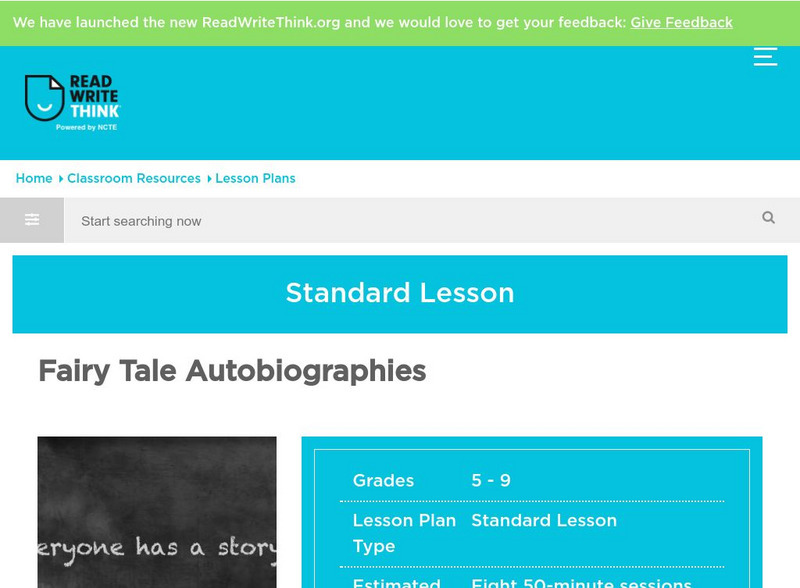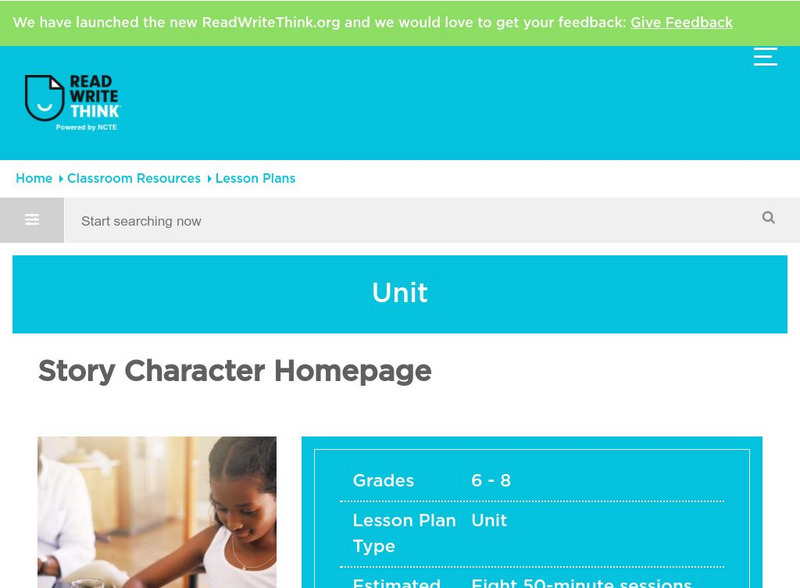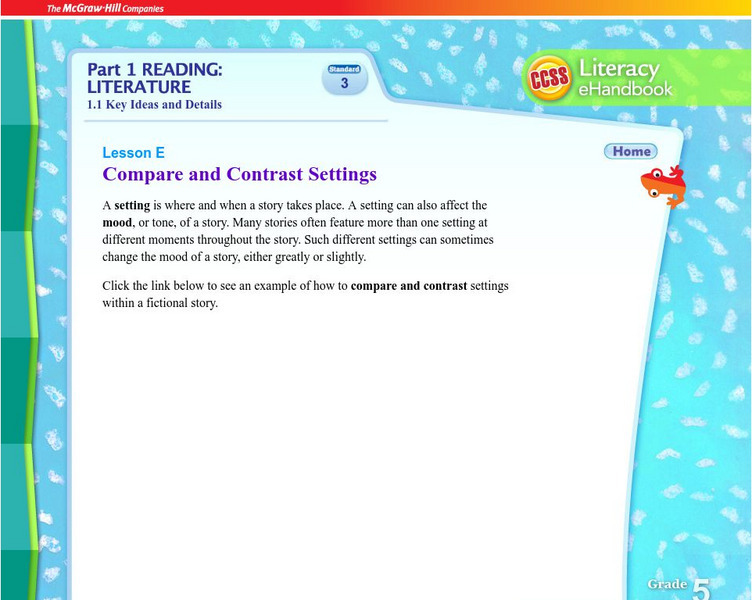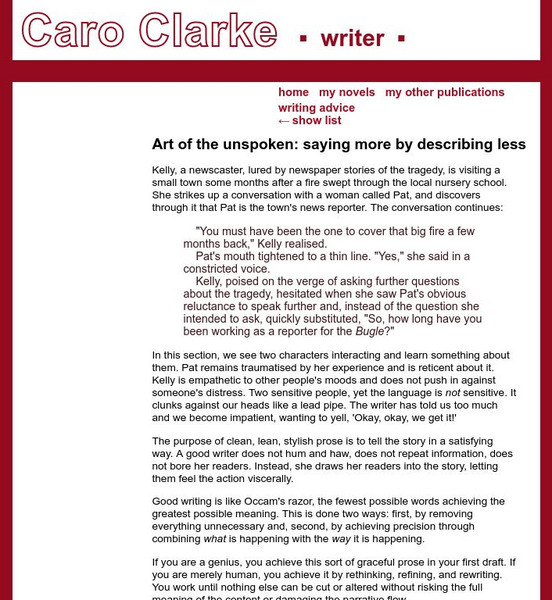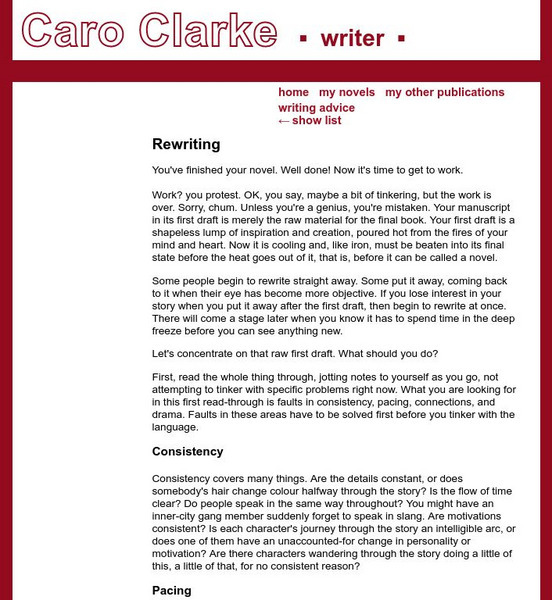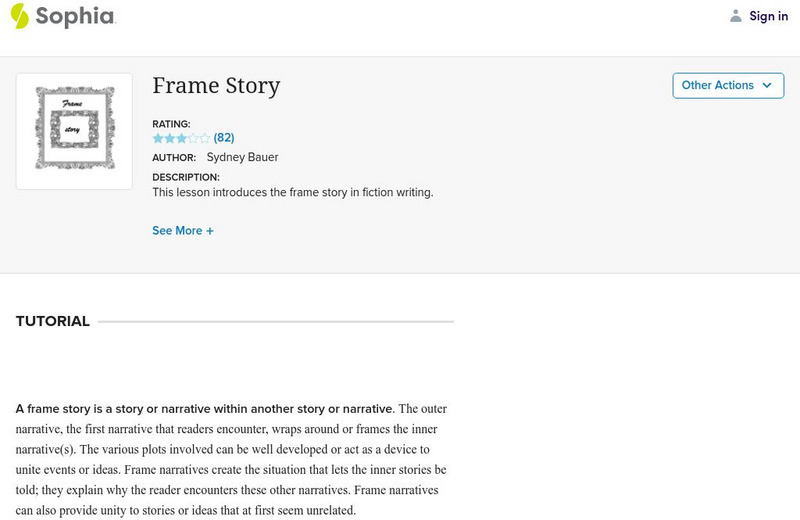ReadWriteThink
Read Write Think: Fairy Tale Autobiographies
Lesson which requires students to analyze fairy tales for literary elements such as characters, setting, conflict, and theme. Students work in groups and write about, edit, and illustrate their fairy tales.
ReadWriteThink
Read Write Think: Choose Your Own Adventure: A Hypertext Writing Experience
This series of lessons involves student collaboration, writing and analytical skills, technology and imagination. While the lesson suggests use of FrontPage, it would also be possible to use a number of other authoring tools.
ReadWriteThink
Read Write Think: Story Character Homepage
Online lesson which allows for students to create an electronic "Home page," for a specific character when reading a class novel. Students research and create web pages, then present findings to the class.
PBS
Pbs: The American Novel: Literary Timeline: Literary Movements: Modernism
Background on the literary time period known as Modernism, including characteristics of writing at this time as well as a list of important modernist authors.
ReadWriteThink
Read Write Think: The Past With Today's Technology:prezi for Historical Fiction
To prepare for reading a historical novel, such as A Long Way from Chicago by Richard Peck, Countdown by Deborah Wiles, Dead End in Norvelt by Jack Gantos, or The Rock and the River by Kekla Magoon, students research various aspects of a...
University of Victoria (Canada)
The U Vic Writer's Guide: Literary Term: Novel
This site provides a general overview of the novel, including its history and generic forms. Includes a few examples and related links.
Other
Today in Literature: Today's Story
Each day, this site provides a different biography or interesting story about a great book or day in literary history. Many of the archived articles are available in full; others are available only in summary for free access. Authors run...
Curated OER
Mc Graw Hill: Part 1 Reading: Literature: Compare and Contrast Settings
To comprehend a story, students need to be able to compare and contrast the setting. Learn how to compare and contrast setting in this reference article.
Tom Richey
Tom richey.net: Historical Writing: Writing Resources for Students
Resources for helping students to write historical essays. Includes a movie trailer to demonstrate the traits of a good introduction, tips for writing a paragraph, tips for formal writing, and guidelines for citing sources.
Smithsonian Institution
Smithsonian Education: Idea Lab: Myths in Words and Pictures
Interactive website in which students learn about myth and symbols in art and storytelling. Engaging and informative with images and informational text.
Tom Richey
Slideshare: Introduction to the Elements of Fiction
A slide show with twenty-two slides about story elements. Includes definitions, information, and examples of character terms, setting terms, plot terms, conflict terms, and more
TES Global
Tes: Analyzing & Comparing Non Fiction
[Free Registration/Login Required] Resource notes to aid students as they analyze different types of nonfiction. The GAP (genre, audience, and purpose) acronym is provided to use when comparing nonfiction texts.
Other
Biographical Dictionary
Students are able to connect to a search engine containing a dictionary that "covers more than 28,000 notable men and women who have shaped our world from ancient times to present day."
Caro Clarke
Loving Your Characters Too Much
This article is the fifth in a series that is designed to help new authors with their new novels. This lesson focuses on your main character and what happens when that character lacks character flaws.
Caro Clarke
Caro Clarke: What Is Conflict?
This is the sixth in a series of articles designed to help the new writer with their novel. This article focuses on conflict and how it effects the characters and the plot of the story. W.11-12.3a Narratives
Caro Clarke
Not Stopping the Reader: How to Avoid Stumbling Blocks
This is the eighth article in a series that focuses on helping the new novel author. This article looks at how the author can avoid creating stumbling blocks that disrupt the flow of the novel.
Caro Clarke
A, B, and C Characters
This is the ninth article in a series that focuses on helping the new novel author. This article focuses on what the author calls "A, B, and C Characters," used to describe the different levels of characters.
Caro Clarke
Explaining Too Much: Why More Is Less
This is the eleventh article in a series that is designed to help the new novel author. This article focuses on how to eliminate needless information in your novel. The key is to not explain too much about the action.
Caro Clarke
The Art of the Unspoken: Saying More by Describing Less
This is the thirteenth article in a series that was developed to help the new novel author. This article focuses on how good descriptions aren't necessarily connected with a lot of words, good descriptions are clean and to the point.
Caro Clarke
Historical Fiction: Who Rules?
This is the fifteenth article in a series designed to help the new novel author. This article focuses on the genre of historical fiction and the role of the author. Is the author a researcher or a story-teller?
Caro Clarke
Rewriting
This is the 17th article in a series that helps the new fiction author with the final step--revision.
Other
Lifestream Center: Lessons: Literary Concepts: Elements of a Story
This site offers a basic understanding of the elements of a story. It clearly defines each literary term.
Harold D. Underdown
Writing Young Adult and Children's Fiction and Fantasy
A great article concerning writing children's literature, especially in the area of fantasy or science fiction. The author provides information concerning how to develop characters, creating literary elements, and discusses some pitfalls...
Sophia Learning
Sophia: Frame Story
Notes introducing various forms of frame stories, or stories that provide a framework for additional stories within. Examples of different frameworks are provided with classical texts including The Rime of the Ancient Mariner by Samuel...


